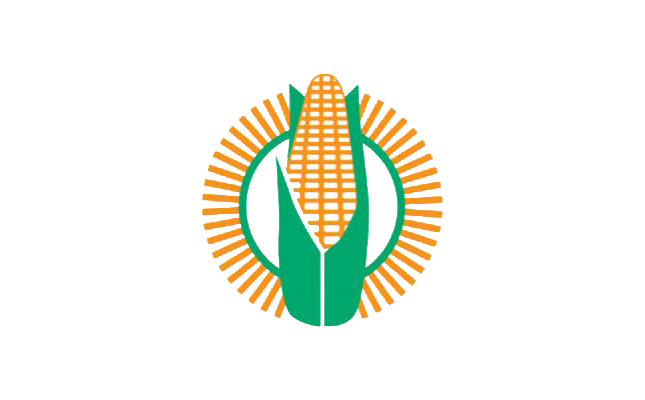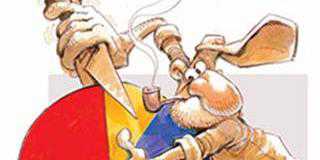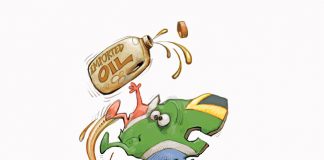
To be profitable in a free-market system, producers need access to credible, reliable, and timeous information.
The signing into law of the Marketing of Agricultural Products Act No. 47 of 1996 brought an end to the marketing boards that grain producers were used to. It also brought an end to absolute certainty about grain prices and producers became exposed to price fluctuations dictated by supply-and-demand on the world market.
This created the need for the establishment of industry bodies and service providers that could supply the necessary information for a sophisticated market to function.
To this end, the Maize Trust, together with the Oilseeds Trust, Winter Cereal Trust and Sorghum Trust, have been instrumental in establishing and funding some of the core institutions of South Africa’s competitive grain market, including the South African Grain Laboratory (SAGL), South African Grain Information Service (SAGIS), the Bureau for Food and Agricultural Policy (BFAP), world-class crop estimates through a collaboration between government and the private sector, a variety of research projects and transformation initiatives, as well as research into regenerative agriculture and several annual bursaries and internships.
When the Maize Trust was founded in August 1998, it inherited more than R300 million in assets from the disbanded Maize Board. These assets were accrued over several years by the board from the sale of imported maize and surplus funds from other sources. Today, these assets generate the only income of the Maize Trust and these funds are used to promote the entire South African maize industry.
The mission of the Maize Trust is to facilitate the continuous improvement of the entire maize industry, to ensure that the industry remains a leader in the region and that it is internationally competitive.
The secondary objectives of the trust are to fund the assimilation and dissemination of market information and to broaden market access for the benefit of the maize industry.
SAGL
The SAGL was established in 1997 and operates a sophisticated laboratory complying with international and local grain testing standards. Grain samples from across the country are sent to the grain lab during the harvest season to be analysed for quality according to various parameters. The results of these tests are published in annual reports and are available to the entire grain value chain.
It is not only grains produced in South Africa that are tested at the SAGL. Imported grains are also analysed and compared to locally produced grains.
Another important part of the grain laboratory’s work includes locating and identifying possible outbreaks of mycotoxins in stored grains to prevent the spread of these pathogens.
SAGIS
SAGIS was established on 11 November 1997 to supply the grain and oilseeds industries with essential market information. The main goal of SAGIS is the gathering, processing, analysing and timeous distribution of reliable agronomic information to all role players. SAGIS keeps a record of the movement of every ton of grain and oilseeds in South Africa during any given month.
Those involved in the grain market, including storers, processors, importers and exporters are statutorily compelled under the Marketing of Agricultural Products Act No. 47 of 1996 to register with SAGIS and to submit their information.
Because SAGIS is a non-profit organisation, which is entirely funded by the Grain and Oilseeds Trusts, this information is available free of charge to the entire value chain.
BFAP
BFAP has become well-known and respected in the industry since being founded in 2004 as a non-profit organisation, through the release of its yearly Baseline Report. BFAP’s distinct purpose is to objectively inform and support decision-making by stakeholders in the agro-food, fibre and beverage sectors of South Africa and the rest of Africa. BFAP manages to combine the private sector, academia, and government in a thinktank to provide independent, rigorously tested, research-based market and policy analyses. BFAP collaborates with an extensive network of research institutions, development agencies, and public and private partners to develop insights and solutions.
Crop estimates
Before the free market there was no real need for timeous crop estimates to help determine the price of commodities. This changed with the implementation of the Marketing of Agricultural Products Act of 1996.
At first the Crop Estimates Committee (CEC) based its monthly estimates on the input of various stakeholders, but in 2006 the then Department of Agriculture, Forestry and Fisheries accepted the Producer Independent Crop Estimates System (PICES) as the benchmark for all area estimates in South Africa. This means that the estimate is made without the input from producers.
The CEC is dependent on the service providers in the National Crop Statistics Consortium, consisting of the Agricultural Research Council, Geoterraimage and SiQ (Pty) Ltd.
The statistical model developed by SiQ (with assistance from the Maize Trust) currently delivers a Coefficient of Variance (CV) of less than 2% at a national level. The system has grown so sophisticated that it can distinguish between dryland and irrigation cultivation, as well as between all the various summer and winter grain crops, and for the first time, provide information at commercial farming level as well as small scale farming level.
Regenerative agriculture
For ongoing sustainable agricultural production, continuous research is needed. The Maize Trust funds and supports several initiatives, including the Conservation Agriculture Farmer Innovation Programme.
There is widespread consensus that plough-based farming, as still often practised, has unsustainable elements, whose continued promotion and application endangers global capacities to respond to the food security concerns. Ploughing and removal of crop residues after harvest leave soil bare and vulnerable to wind and rain, resulting in gradual, often unnoticed erosion of soil.
In South Africa, crop production systems based on intensive and continuous soil tillage have led to excessively high soil degradation rates. This added to growing problems with profitability and poverty in some of the rural areas.
Conservation agriculture is seen as an ideal system for sustainable and climate-smart agricultural intensification, through which farmers can attain higher levels of productivity and profitability, while improving their soil health and the environment.
Conclusion
The Maize Trust does not specify beneficiaries, but only lists the objectives of the trust. This means that funding from the trust can be accessed by anybody in the maize industry who can demonstrate that an intended programme will benefit the industry as a whole.













